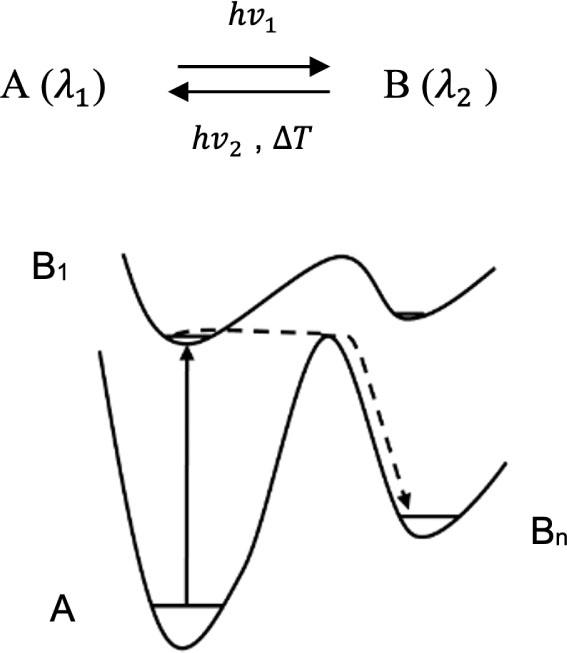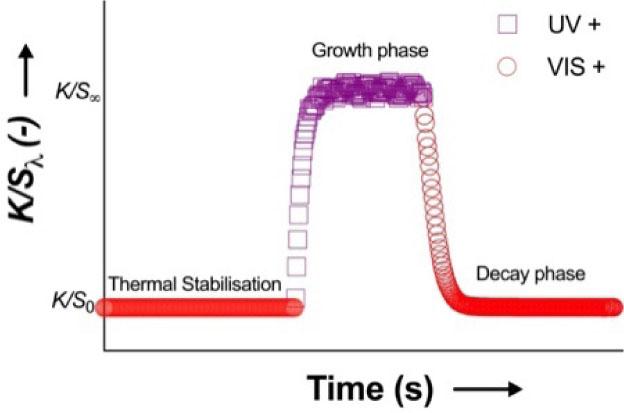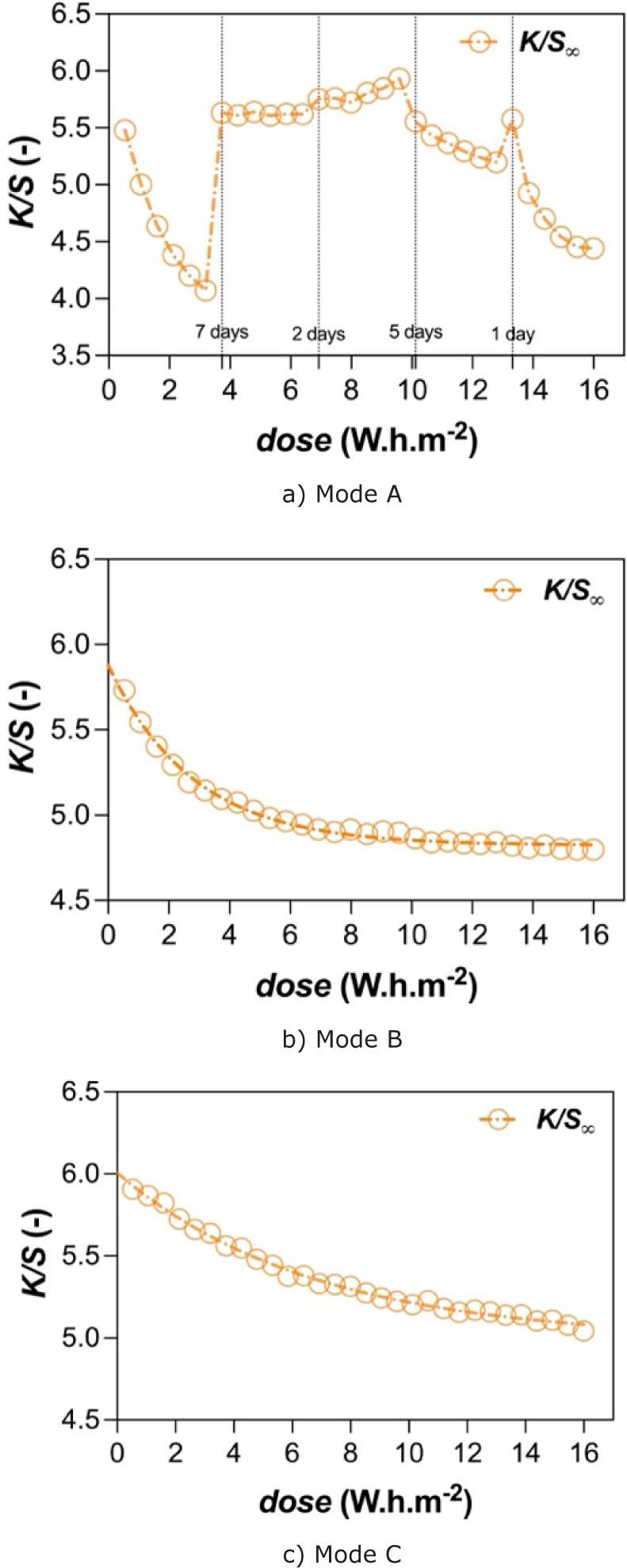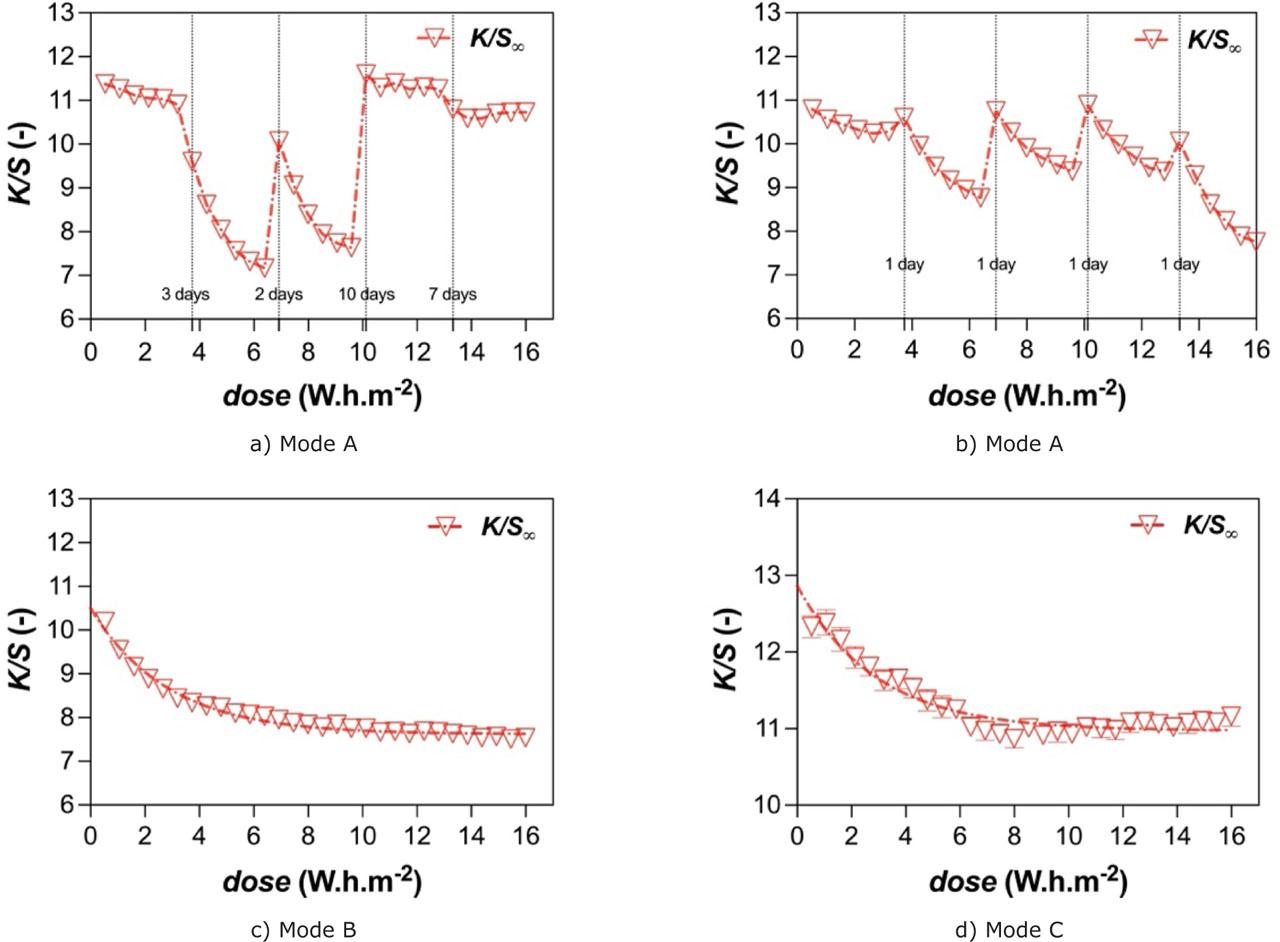Fig. 1.

Fig. 2.

Fig. 3.

Fig. 4.

Fig. 5.

Fig. 6.

Best-fit values for 100 g_kg−1 and 200 g_kg−1
| Mode B: 30 cycles of 1 block | Mode C: 1 UV cycle without decay phase of 1 block | ||||
|---|---|---|---|---|---|
| 100g.kg−1 | 200g.kg−1 | 100g.kg−1 | 200g.kg−1 | ||
| K/S∞ | 5.880 | 10.50 | K/S∞ | 6.007 | 12.87 |
| K/S0 | 4.823 | 7.615 | K/S0 | 4.990 | 10.97 |
| k | 0.3564 | 0.3525 | k | 0.1498 | 0.3425 |
| H | 1.945 | 1.967 | H | 4.627 | 2.024 |
| R squared | 0.9920 | 0.9856 | R squared | 0.9949 | 0.9309 |
| RMSE | 0.0208 | 0.0772 | RMSE | 0.0178 | 0.1152 |
| AICc | −223.7 | −145.1 | AICc | −232.8 | −121.1 |
| ΔK/S | 16.30 % | 26.01 % | ΔK/S | 9.48 % | |